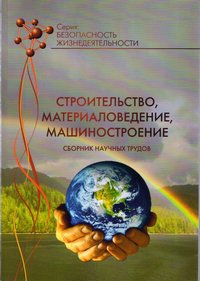The ways of prepare the level of chemical safety in Ukraine
DOI:
https://doi.org/10.30838/P.CMM.2415.250918.252.162Keywords:
hazardous chemicals, sources of chemical hazard, causes of emergencic situations, measures to improve the level of chemical safetyAbstract
Purpose. The aim of the work is the study the structure of production of hazardous chemicals in Ukraine, the state of chemical hazard and the selection of modern effective measures to improve the level of chemical safety in the country. Methodology. Study and analysis of international experience in chemical safety. Findings. It has established that the main sources of chemical hazard in Ukraine are enterprises, facilities, installations, units that produce, process hazardous chemicals that are not use in production and their disposal is necessary. The main causes of emergencies associated with hazardous chemicals are a high level of concentration of chemically hazardous objects; outdated technology; depreciation of fixed assets of enterprises; low efficiency of treatment facilities; low level of production culture and violation of design, technological regimes. Improving chemical safety legislation is nece ssary to improve chemical safety; international cooperation and the implementation of Ukraine‘s international obligations in the field of chemicals and waste management; improvement of the monitoring procedure; promoting the harmonization of national legislation on waste and chemicals in accordance with European standards, etc. The implementation of measures will improve the level of chemical safety and improve the system of handling chemicals, reduce the likelihood of chemical pollution, accidents and accidents dur ing production, storage and transportation of chemicals substances, reduce social and economic losses. Originality and practicalmeaningfulness. A state of chemical hazards in Ukraine analyzed and effective modern measures to improve the level of chemical safety presented.
References
Analitychnyj ogljad stanu tehnogennoji ta pryrodnoji bezpeky v Ukrajini za 2016 rik (dopovid') [Analytical review of the state of man-made and natural safety in Ukraine for 2016 (report0] – [Elektronnyj resurs] – Rezhym dostupu: http://www.dsns.gov.ua/files/2017/8/18/Analit%20dopovid/2%20statistic.pdf (in Ukrainian).
Garmash S. N. Kompleksnyiy podhod k organizatsii ohranyi truda i grajdanskoy zaschityi na promyishlennyih predpriyatiyah Ukrainyi // Razvitie tehnologiy buduschego: monografiya / avt.kol.: V. A.Balashov, M. V.Knyazeva, I. YA.Lvovich i dr. [An integrated approach to the organization of labor protection and civil protection at indu strial enterprises of Ukraine in Development of future technologies: monograph] Odessa: KUPRIENKO SV, 2018 – S. 69-75 (in Russian).
Koval'ov O. S, Tregubov D. G. Analiz stanu himichnoji bezpeky na ukrajini u svitli avarij na pidpryjemstvah z obertannjam amiaku [Analysis of the chemical safety situation in Ukraine in the light of accidents at enterprises with ammonia rotation]. Naukovyj visnyk budivnyctva [Scientific Bulletin of Construction]. Harkiv: HNUBA, 2013, Vyp. 74, pp. 390 - 394 (in Ukrainian).
Kurdil' N. V. Nacional'ni priorytety v sferi himichnoji bezpeky ta zahyschenosti vidpovidno do vymog global'nogo partnerstva G7 proty poshyrennja zbroji masovogo znyschennja [National priorities in the field of chemical safety and security in accordance with the requirements of the G7 Global Partnership against the proliferation of weapons of mass destruction ]. Medycyna neotlozhnyh sostojanyj [ Medicine of Urgent Conditions], no. 1 (88) 2018, pp. 131-135(in Ukrainian).
Levchenko O. Je. Himichna bezpeka jak element nacional'noji bezpeky [Chemical safety as an element of national security]. Nauka i praktyka [Science and practice], 2014, no 1, pp. 38-49 (in Ukrainian).
Materialy 5-ji Mizhnarodnoji konferenciji «Himichna i radiacijna bezpeka: problemy i rishennja» [Materials of the 5th International Conference "Chemical and Radiation Safety: Problems and Solutions] , 17-20 travnja 2016, Kyjiv. (in Ukrainian).
Himichna nebezpeka ta «strausyna» polityka. O. Prohorov [Chemical danger and "ostrich" policy. O. Prokhorov] [Elektronnyj resurs] – Rezhym dostupu:https://dt.ua/ENVIRONMENT/himichna_nebezpeka_ta_strausina_politika.html/ (in Ukrainia).
Downloads
Published
Issue
Section
License
Редакція Видання категорично засуджує прояви плагіату в статтях та вживає всіх можливих заходів для його недопущення. Плагіат розглядається як форма порушення авторських прав і наукової етики.
При виявлені у статті більш ніж 25% запозиченого тексту без відповідних посилань та використання лапок, стаття кваліфікується як така, що містить плагіат. У цьому випадку стаття більше не розглядається редакцією, а автор отримує перше попередження.
Автори, в статтях яких повторно виявлено плагіат, не зможуть публікуватися в усіх журналах Видавництва ДВНЗ «Придніпровська державна академія будівництва та архітектури».
Автори, які публікуються у цьому журналі, погоджуються з наступними умовами:
- Автори залишають за собою право на авторство своєї роботи та передають журналу право першої публікації цієї роботи на умовах ліцензії Creative Commons Attribution License, котра дозволяє іншим особам вільно розповсюджувати опубліковану роботу з обов'язковим посиланням на авторів оригінальної роботи та першу публікацію роботи у цьому журналі.
- Автори мають право укладати самостійні додаткові угоди щодо неексклюзивного розповсюдження роботи у тому вигляді, в якому вона була опублікована цим журналом (наприклад, розміщувати роботу в електронному сховищі установи або публікувати у складі монографії), за умови збереження посилання на першу публікацію роботи у цьому журналі.
- Політика журналу дозволяє і заохочує розміщення авторами в мережі Інтернет (наприклад, у сховищах установ або на особистих веб-сайтах) рукопису роботи, як до подання цього рукопису до редакції, так і під час його редакційного опрацювання, оскільки це сприяє виникненню продуктивної наукової дискусії та позитивно позначається на оперативності та динаміці цитування опублікованої роботи (див. The Effect of Open Access).

